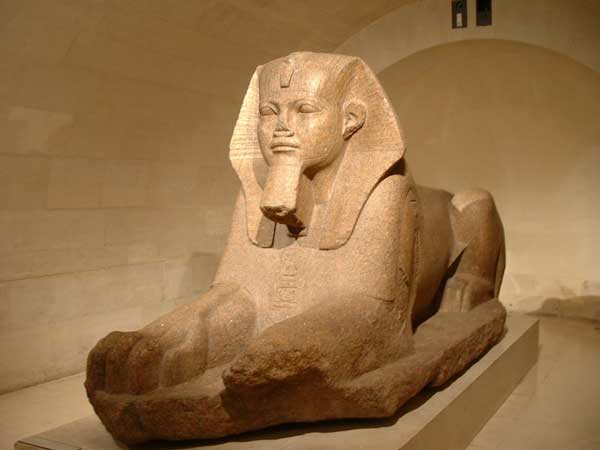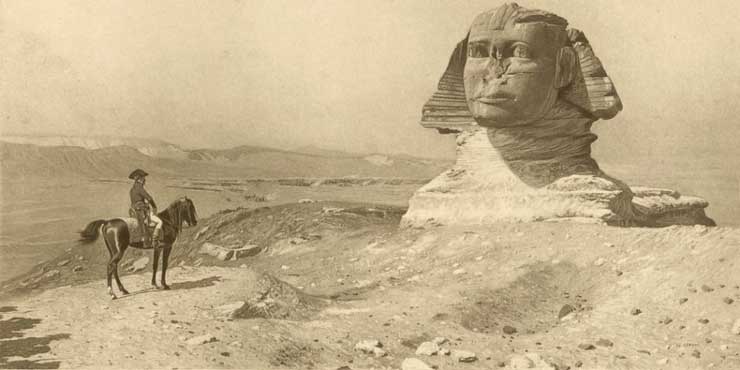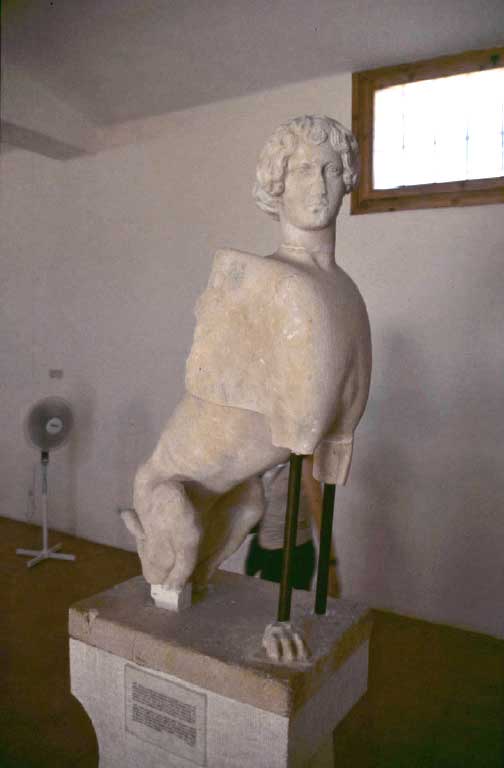




President Barack Obama looks amazingly like Akhenaten the father of monotheism. Michelle Obama looks amazingly like Akhenaten's mother, Queen Tiye. Akhenaten had two daughters by Nefertiti. They look amazingly like Malia and Sasha. The code names of Renegade, Renaissance, Radiance and Rosebud correlate well with the ancient depiction of the Royal Family.
I have been showing off my art work of Barack Obama as Akhenaten to see what people think. Admittedly, most of my friends already see the world differently than your average citizen. Let's just say they already come with a conspiracy bent. My hope is to instill wonder in our world and to say that things just might be a little stranger than you thought.
I would show my friends this picture and say, "What do you think?" Without any other comment.
They would say, "Well, he does look a lot like Akhenaten."
My jaw would dangle just a bit.
I say, "OK, I understand that you do not know that this woman next to Barackhenaten is Akhenaten's mother, Queen Tiye."
"That's really her face?" They ask.
I say, "I have done nothing to alter their faces. I simply found a photo that was facing the right direction and their mouth was closed. I cut the face in half and super-imposed it on the ancient busts."
"That is amazing!"
"It gets even stranger." I say, "I found that Akhenaten had two daughters from Queen Nefertiti...
I wait for it.
"They do look like Akhenaten's children!"
"Notice in this ancient frieze of Akhenaten and Nefertiti with their two girls, what is the other most prominent features of this picture?" I ask.
"Didn't Akhenaten worship the sun god Aten?"
"Yes"
"Oh, and the flowers."
"Exactly. Do you know the code names the secret service gave the first family?"
"Isn't that a secret?"
"I guess it should be but, no, it was in the news. Their names are Renegade, Renaissance, Radiance, and Rosebud."
"Radiance and Rosebud?"
"Absolutely. Here look for yourself."
"Well, what do you think now?" I ask.
"Are there family connections?"
Come on, what are the odds that a woman that looks exactly like the mother of Akhenaten would marry a man who looks exactly like Akhenaten and have two children that look exactly like the offspring of Akhenaten and Nefertiti?
As a kid my mind was open to such possibilities. As I studied the pyramids and ancient astronauts, I knew mummification had a mysterious property that we in the, then, 20th century could not reproduce. Our new mummies decompose. The ancient Egyptian mummies did not. I knew this allowed for the retrieval of a viable cell for cloning and I pondered if there would be some day when "they" would bring back the Pharaohs. I was thinking of some Armageddon script when the dead would walk the Earth. What I never thought of was, the clones coming out as the first family of America!
"Today is a great day to live." They say.
"Amazing!"
Look Familiar?
Pharaoh Akhenaten was known as the Heretic King. He was the tenth King of the 18th Dynasty.
The very controversial Akhenaten and his family lived in the great religious center of Thebes, city of the God Amun. There were thousands of priests who served the Gods. Religion was the 'business' of the time, many earning their living connected to the worship of the gods.
All indications are that as a child Akhenaten was a family outcast.
Scientists are studying the fact that Akhenaten suffered from a disease called Marfan Syndrome, a genetic defect that damages the body's connective tissue. Symptoms include, short torso, long head, neck, arms, hand and feet, pronounced collarbones, pot belly, heavy thighs, and poor muscle tone. Those who inherit it are often unusually tall and are likely to have weakened aortas that can rupture. They can die at an early age. If Akhnaton had the disease each of his daughters had a 50-50 change of inheriting it. That is why his daughters are shown with similar symptoms.
Akhenaten was the son of Amenhotep III and Queen Tiy, a descendent of a Hebrew tribe.
In 1352 BC. Akhenaten ascended the throne, succeeding his father Amenhotep III who had died. Akhenaten was just a teenager at the time, but it was the desire of Queen Tiy that he rule. In some version of the story, it is written that father and son shared the throne briefly.
Akhenaten's reign lasted 16 years. This was a difficult time in Egyptian history. Many scholars maintain that Akhenaten was responsible for this decline, but evidence suggests that it had already started.
Akhenaten's Great Royal Wife was Queen Nefertiti.
It is accepted that Akhenaten and Nefertiti had six daughters. No son was ever shown in reliefs.
The names of the daughters were; Meritaten (1349 BC) - Meketaten and Ankhenspaaten (1346 BC) - Neferneferuaten (1339 BC) - Neferneferure and Setepenre (1338).
In 1337 BC the official family, with all six of Nefertiti's daughters was shown for the last time.
In 1336 BC Meketaten died in childbirth.
In 1335 Nefertiti seemed to vanish, assumed dead.
It was said that one day Akhenaten had a vision wherein he saw a sun disc between two mountains. He felt that God was guiding him to make change. He was shown the God, Aten, as the Sun Disk - the Light. He felt guided by Aten to build a city between the two mountains.
In the sixth year of his reign Akhenaten rejected the Gods of Thebes. They were never part of his childhood anyway since he had been shunned as a child. Akhenaten had declared for the first time in recorded history that there was only one God - the concept of monotheism. Overnight he turned 2,000 years of Egyptian religious upside down...
Nefertiti's prominent role in Egyptian royal rule and religious worship reflects her influence in the public sphere. During the early years of her royal reign, Nefertiti as part of her religious conversion changed her name. Nefertiti which means "The-beautiful-one -is come" became Neferneferuaten-Nefertiti or "The-Aten-is -radiant-of-radiance [because] the-beautiful-one-is come". A different interpretation of the name change, translated Neferneferuaten to mean--"Perfect One of the Aten's Perfection".
Following his wife's lead, Amenhotep IV changed his name in the fifth year of his reign to Akhenaten.
In 1342 BC the seat of government was transferred to Akhetaten.
Tomb 55 in the Valley of the Kings
Of all the royal mummies ever discovered none has ever caused more controversy then the one found in tomb 55 of the Valley of the Kings.
At the beginning of the 20th Century, Theodore Davis, a wealthy American excavating in Egypt, discovered a tomb in which a burial from the Armana period had been reinterred. This tomb was clearly unfinished, and the burial a hasty one. Gilded wooden inlay panels on the floor and against the wall. They bore the damaged image of Akhenaten worshiping the sun disc and the name of Queen Tiy.
In a niche were four beautiful alabaster jars that held the internal organs of the mummies. Lying on the floor was a badly damaged but beautiful coffin made with thousands of paste in-lays and semi-precious stones in the shape of protective wings. The cartouches containing the occupants name had been hacked out.
When they opened the coffin they found a mummy wrapped in gold-leaf. But as they touched the mummy it crumbled to dust leaving the excavators with a pile of disarticulated bones at the bottom of the coffin. But beneath the skeleton, the last sheet of gold, seemed to have the damaged named of Akhenaten written on it. The pelvis was wide like a female's. The head was elongated.
What really became of Akhenaten's mummy still remains a mystery. Fragments of sculpture and carving from the royal tomb at Akhetaten shows that his body was originally put there, but no sign of the mummy remains. It is possible that followers of the Aten feared for it's destruction, which would deny him eternal life, and moved the body to a place of safety.
Akhenaten is perhaps unfairly not credited with being a particularly successful Pharaoh. Records seem to indicate that he allowed Egyptian influence wane but this may not be true. These ideas are based on the famous Amarna Tabletsfound in Akhetaten in many of which Egyptian vassal cities plead for assistance, but no replies are preserved.
As there is no surviving record of Egyptian territory being lost at this time it is possible that Akhenaten was merely skillfully playing one city against the other to achieve through diplomacy what would otherwise require military force.
The Amarna Tablets - Letters
The el-Amarna letters, a collection of correspondence between various states and Egypt, were found in the remains of the ancient city of Akhetaten, built by Akhenaten around 1370 BCE. Some of the documents belong to the time of Amenhotep III, while others are from the time of Akhenaten. They provide invaluable insight into the foreign affairs of several countries in the Late Bronze Age.
The first Amarna tablets were found by local inhabitants in 1887. They form the majority of the corpus. Subsequent excavations at the site have yielded less than 50 out of the 382 itemized tablets and fragments which form the Amarna corpus known to date.
The majority of the Amarna tablets are letters. These letters were sent to the Egyptian Pharaohs Amenophis III and his son Akhenaten around the middle of the 14th century B.C. The correspondents were kings of Babylonia, Assyria, Hatti and Mitanni, minor kings and rulers of the Near East at that time, and vassals of the Egyptian Empire.
Almost immediately following their discovery, the Amarna tablets were deciphered, studied and published. Their importance as a major source for the knowledge of the history and politics of the Ancient Near East during the 14th Century B.C. was recognized. The tablets presented several difficulties to scholars.
The Amarna tablets are written in Akkadian cuneiform script and present many features which are peculiar and unknown from any other Akkadian dialect. This was most evident in the letters sent from Canaan, which were written in a mixed language (Canaanite-Akkadian).
The Amarna letters from Canaan have proved to be the most important source for the study of the Canaanite dialects in the pre-Israelite period.
More to the story
He changed Egypts artistic style to an almost comedic form by instructing artists to do caricature portrayals of their subjects. (that's odd)
"This statue from Akhenaten's temple at Karnak is the three-dimensional equivalent of the relief above. This is the classic early period look of Akhenaten: feminine curves, heavy thighs and belly, half-closed eyes, full lips, and a long face and neck characterized representations of the king. (some say he was bi-sexual but others say he had a genetic disease that caused his own body to be rather feminine)
During the early years, there was a tendency for the artists to make Akhenaten's family members look like clones (did they say clones?) of him. Here, at right, is an early representation of either Nefertiti or Tiye, looking very much like images of Akhenaten from the early years. This cloning went out of fashion with the advent of the later style of Amarna art. This statue from Akhenaten's temple at Karnak is the three-dimensional equivalent of the relief above. This is the classic early period look of Akhenaten: feminine curves, heavy thighs and belly, half-closed eyes, full lips, and a long face and neck characterized representations of the king.
http://www.heptune.com/art.html
The Mystery of Akhenaten: Genetics or Aesthetics?
"His odd appearance was particularly prominent in art from the early part of the reign. One early statue portrays the king in the nude and without genitalia of any kind."
http://waywardthinking.multiply.com/jou ... an_Pharaoh












